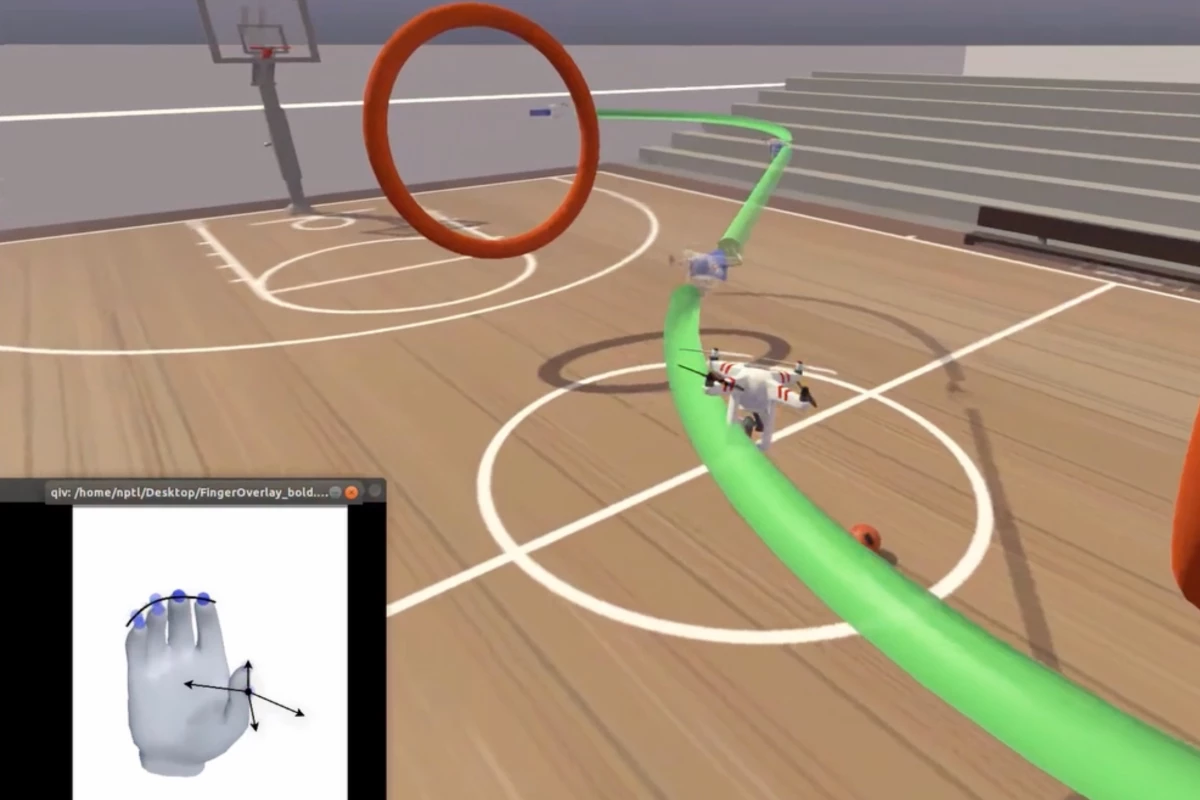Brain-computer interfaces may allow paralyzed people to perform basic actions such as eating and typing, but … well, there's more to life than eating and typing. That's where an unprecedented new BCI comes in, as it has allowed a man to fly a virtual drone just by thinking of moving his fingers.
While there are different types of brain-computer interfaces (BCIs) which work in different fashions, many of them detect patterns of electrical activity in the brain that correspond to thoughts of moving certain body parts.
If a paralyzed user thinks of raising their immobile right hand, for instance – even though they can't actually raise it – the BCI recognizes the distinct pattern of neurons that fire in response to that thought. The system then performs a predefined action which corresponds to that mental command, such as raising the hand of a robotic arm.
So far, the technology has mostly been focused on allowing users to perform daily-task-type activities. BCIs have been used to lift food to a paralyzed user's mouth, for instance, or to select letters on a computer screen when typing messages.
However, it's also very important for users to be able to play games, partake in recreational activities, and otherwise socially connect with other people.
That's where the new BCI comes in. Developed as part of the existing BrainGate2 project, it was created by scientists from Stanford, Rice and Brown universities in the US.
Whereas some BCIs non-invasively take EEG (electroencephalography) readings using an array of electrodes placed against the scalp, this one requires two arrays to be surgically implanted in the brain's motor cortex. This is necessary in order to monitor the exact neurons associated with fine control of the fingers.
Wires run from each of the electrodes to a pedestal which is anchored to the skull and protrudes through the skin. Its external port can be hard-wired to a computer which analyzes the EEG readings.
For the study, the system was used to let a 69-year-old tetraplegic man steer a virtual quadcopter through a virtual indoor obstacle course. This was not a randomly chosen activity, as the test subject had a passion for flight.
In order to control the drone, he had to picture his right hand being divided into three sections – the thumb; the index and middle fingers; and the ring and little fingers.
Mentally moving the thumb up, down, left and right caused the copter to go forward, backward, turn left, and turn right, respectively. Raising the index/middle fingers up and folding them down made the drone go up and down, while raising and folding the ring/little fingers made the virtual aircraft rotate right or left.
Over a total of nine two- to five-hour training sessions, the test subject became adept at piloting the drone through the obstacle course, even combining multiple finger commands to perform two movements at the same time (i.e: flying up while turning right, etc). He showed no signs of fatigue, and in fact requested more flight time when not being formally tested.
"People tend to focus on restoration of the sorts of functions that are basic necessities – eating, dressing, mobility – and those are all important," says Stanford's Prof. Jaimie Henderson, co-author of a paper on the study "But oftentimes, other equally important aspects of life get short shrift, like recreation or connection with peers. People want to play games and interact with their friends."
The paper was recently published in the journal Nature Medicine.
Source: University of Michigan




